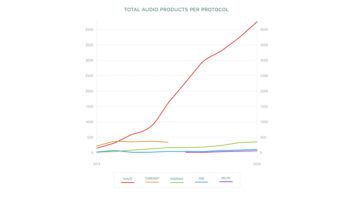
Do the products we use for music production ever become obsolete if they still work?
advertisement
It seemed portentous that the day Mark Vail’s new book, The Synthesizer (Oxford University Press), arrived in the mail I would be asked to host “Setting Up a Second-Hand Studio” at the Recording Academy’s Producers & Engineer’s Wing swap meet here in my own Bay Area chapter. In the larger scheme of things, both the book and the event reflect our ongoing balancing act of trying to do the best work we can with as little distraction (e.g., upgrades) as possible, while searching for inspiration and ways to stay fresh (e.g., investigating new technologies). What better way to revisit the issue than to hunt for treasures in someone else’s junk and, perhaps, to stare at a little bit of gear porn?
Not to be confused with Vail’s classic Vintage Synthesizers (Backbeat Books), which tells the stories of historically important products, The Synthesizer is meant to be a broad introduction to the topic of electronic musical instruments. Here, he covers everything up to the latest in soft synths and hardware modules, while describing the variety of ways in which sound is generated and processed.
What resonated with me almost immediately was that some of the most obscure and seemingly outdated instruments—the theremin and the Ondioline, for example—are still being used to create music, on high-level productions in many cases. In the instrument world, at least, anything can be artistically valid under the right circumstances.
In a recent issue dedicated to vintage gear, Electronic Musician ran a feature on chip music, which described how musicians are snapping up old computers (Amiga 1000, Atari ST, Commodore 64) and portable game players (Nintendo Game Boy, Atari 2600) and exploiting their low-res sounds to create new music, often writing custom software in the process.
Admittedly, the characteristic timbres of a Yamaha DX7 may sound dated, but the synth has a unique and important sound, historically speaking. And for many people linear FM synthesis remains viable. Two decades ago, interactive-computer pioneer Tim Perkis wrote his own code to control the TX81Z, another Yamaha FM synth, at a very deep level using a MIDI fader box. Despite trying all the software emulations of FM synthesis currently available (including ones modeled on Yamaha-style instruments), he still prefers the original hardware piece for its sound quality and flexibility.
So it’s not just about the fetishism of collectors and hoarders that keeps the classics alive, although that aspect does persist in both the instrumental and engineering scene.
Caveat Emptor
Among the attendees of the P&E swap meet, which was co-sponsored by the San Francisco section of the AES, were GrammyU members, young musicians and engineers interested in starting or expanding their personal studio on a budget. The pros, which included musicians, composers and engineers, swapped stories while poking through a range of unwanted gear—TT patch bays, high-end converters, hard-disk multitrack recorders, digital interfaces, and a myriad of cables.
That’s where my spiel regarding Setting Up a Second-Hand Studio comes in: How does a person navigate the second-hand market and build a useful studio without simply accumulating someone else’s junk? Typically, the knowledgeable recording engineer attacks the problem in an orderly fashion by researching what he or she needs for each stage in the signal chain—from input transducers through converters and recording/playback devices to output transducers. That helps keep the misguided purchases (and hopefully the impulse buys) to a minimum while mitigating the accumulation of crap.
Musicians, on the other hand, don’t usually have such a linear view. Their first studio is often pieced together from whatever gear they already have. Severely abused SM58 to record everything? Check. Home-stereo speakers and earbuds for monitoring? Check. Ancient Marantz receiver for switching? Check. Recording directly into the mini-jack input of a computer? Check.
Obviously, there’s a lot of room for improvement in such a situation. The trick is to make sure that everything purchased will be hassle-free so that there are no distractions when it’s time to capture the creative spark. Consider these two polar-opposite, low-cost approaches: Should one scoop up the bargain of a Mac G3 with, say, an 8-channel Digi001 interface and SCSI hard drive—perfect for tracking a small band? (The caveat, of course, is that the computer and drives must be in working order for this to be worth trucking home, or else be prepared to track down the parts needed to make everything operational.) Or does one simply purchase a portable digital recorder? (They’re cheap and plentiful, offering multichannel input configurations with up-to-date resolution and interface options.)
It seems odd within the pages of Mix to even suggest acquiring 15-year-old technology that is neither top quality nor valuable in a collectible sense, or to recommend a prosumer device. But the truth is, no matter what gear you have, the talent in front of the mic and the skill behind the recorder remain the most important parts of the equation, and they never become obsolete.







